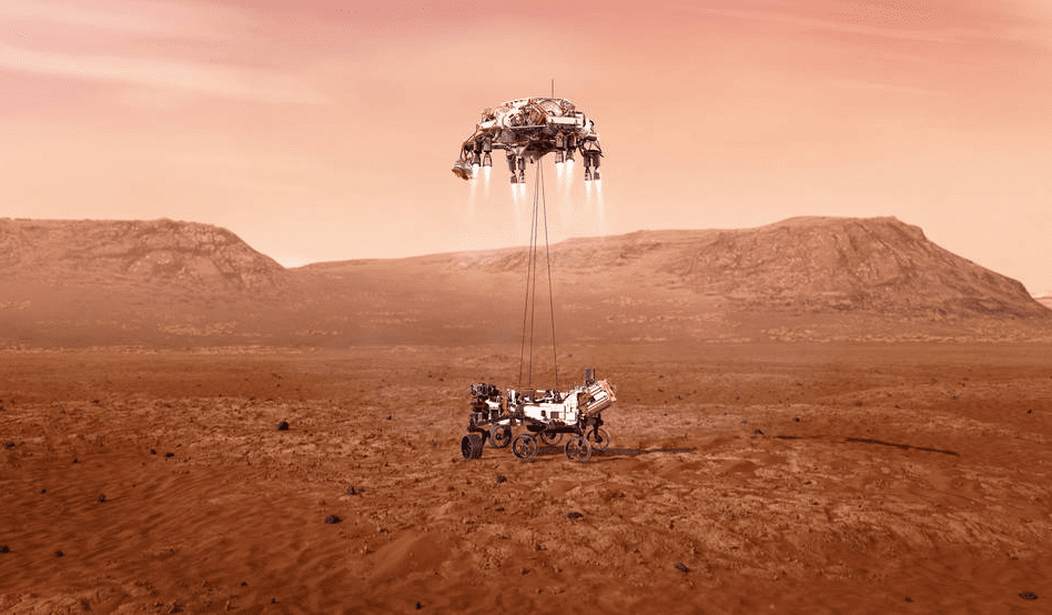She’s called “Perseverance” and after a 140 million mile journey, will land on the planet Mars on Thursday, February 18.
That is, if all goes well.
In truth, even getting to Mars has proven to be a fraught enterprise. Roughly half of the 49 missions sent to Mars by all nations have failed. The U.S. has a pretty good record of successes, but the failures have been notable. The Mars Climate Orbiter was supposed to reach Mars in 1999, but burned up in the atmosphere of the red planet when software instructions to the engines were discovered to have been written using two different means of measurement.
Most of the failures belong to the old Soviet Union. They failed so many times that they haven’t even tried going to Mars since 1996. Suffice it to say, Mars missions to date have been hit or miss propositions.
The mission is costing taxpayers $2.7 billion, which is about average for interplanetary probes. But if Perseverance manages to land successfully, space buffs are in for a real treat.
Perseverance, the fifth and by far most sophisticated rover vehicle NASA has sent to Mars since Sojourner in 1997, also incorporates several pioneering features not directly related to astrobiology.
Among them is a small drone helicopter, nicknamed Ingenuity, that will test surface-to-surface powered flight on another world for the first time. If successful, the four-pound (1.8-kg) whirlybird could pave the way for low-altitude aerial surveillance of Mars during later missions.
Another experiment is a device to extract pure oxygen from carbon dioxide in the Martian atmosphere, a tool that could prove invaluable for future human life support on Mars and for producing rocket propellant to fly astronauts home.
Low altitude surveillance of the surface is vital to find a good landing spot for manned missions. The Ingenuity will have a top speed of 22 MPH and allow for powered flight for about 300 yards. It’s scheduled to be deployed twice over a 30 day period and is designed as a technology test for the concept of powered flight on another planet.
The other experiment is directly related to a manned mission to Mars. The idea to extract oxygen (O2) from carbon dioxide (CO2) and methane (CH4) from the carbon dioxide has been around since the 1980s. One plan, proposed by aerospace engineer Robert Zubrin, is to launch several factory ships to Mars that, once safely on the ground, would pull in the CO2 to create oxygen and, when mixed with hydrogen, methane. The methane could be used to power rovers, drones, as well as fuel for the journey home. Instead of having to lug thousands of tons of the gas to Mars, the astronauts would have all they’d need for a stay on Mars on the planet already.
There will be an attempt at a sample return.
Advanced power tools will drill samples from Martian rock and seal them into cigar-sized tubes for eventual return to Earth for further analysis – the first such specimens ever collected by humankind from the surface of another planet.
The sample return trip is still under development. What we’re going to do with the Martian material to keep it from contaminating earth apparently hasn’t been worked out yet.
All in all, Perseverance will be the most ambitious mission to Mars ever attempted. But all of these spectacular feats of technological wizardry will mean nothing if the lander fails.










Join the conversation as a VIP Member